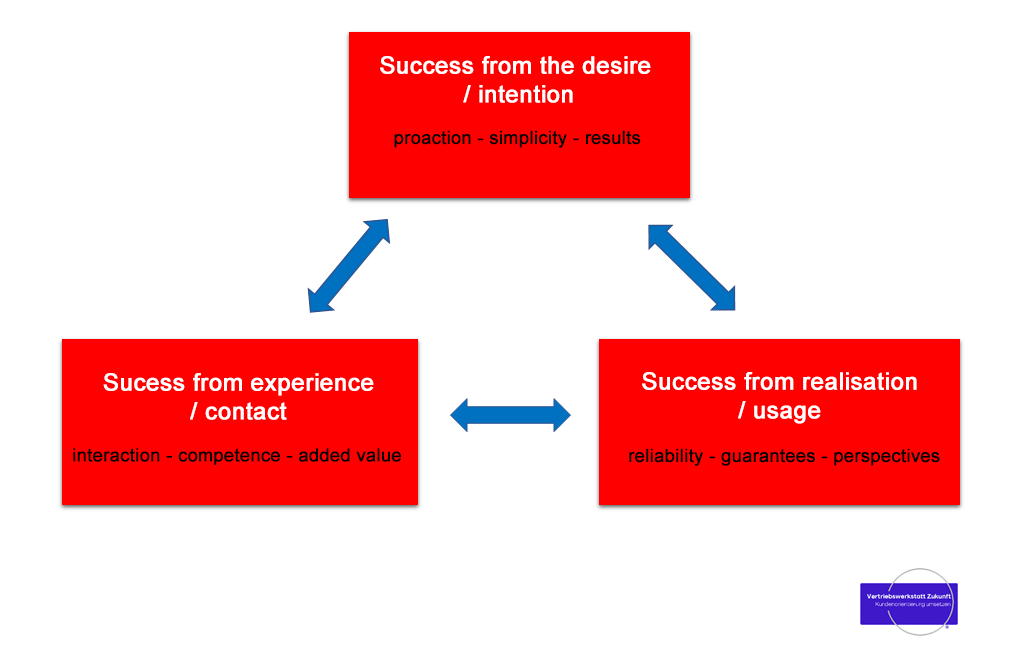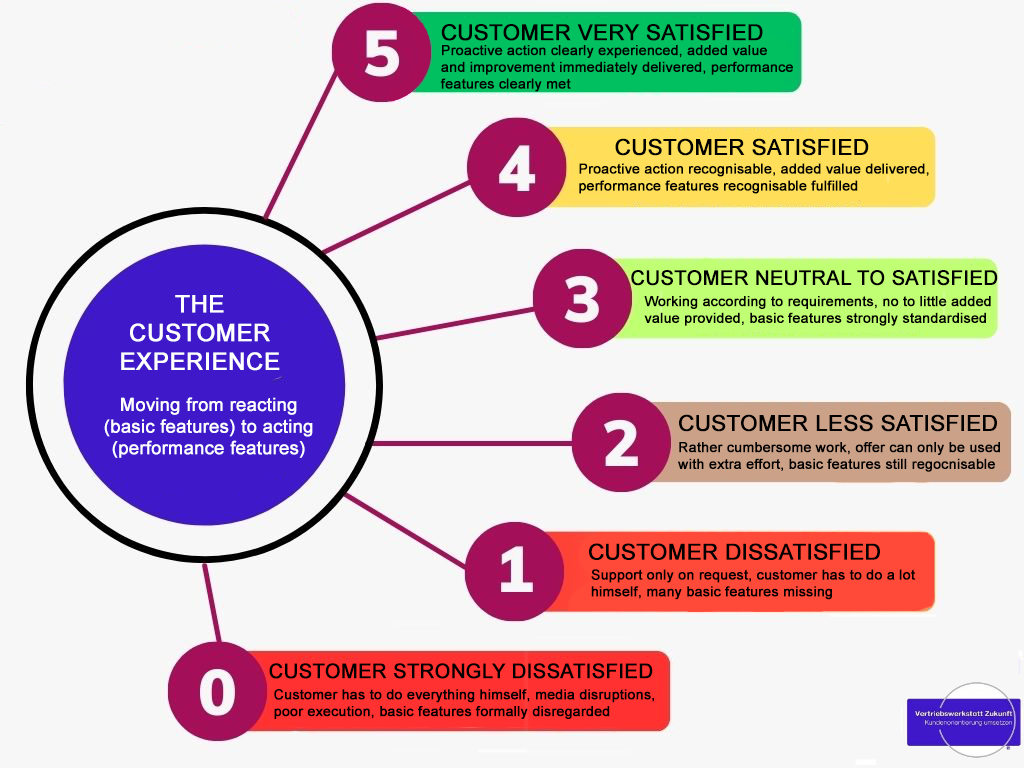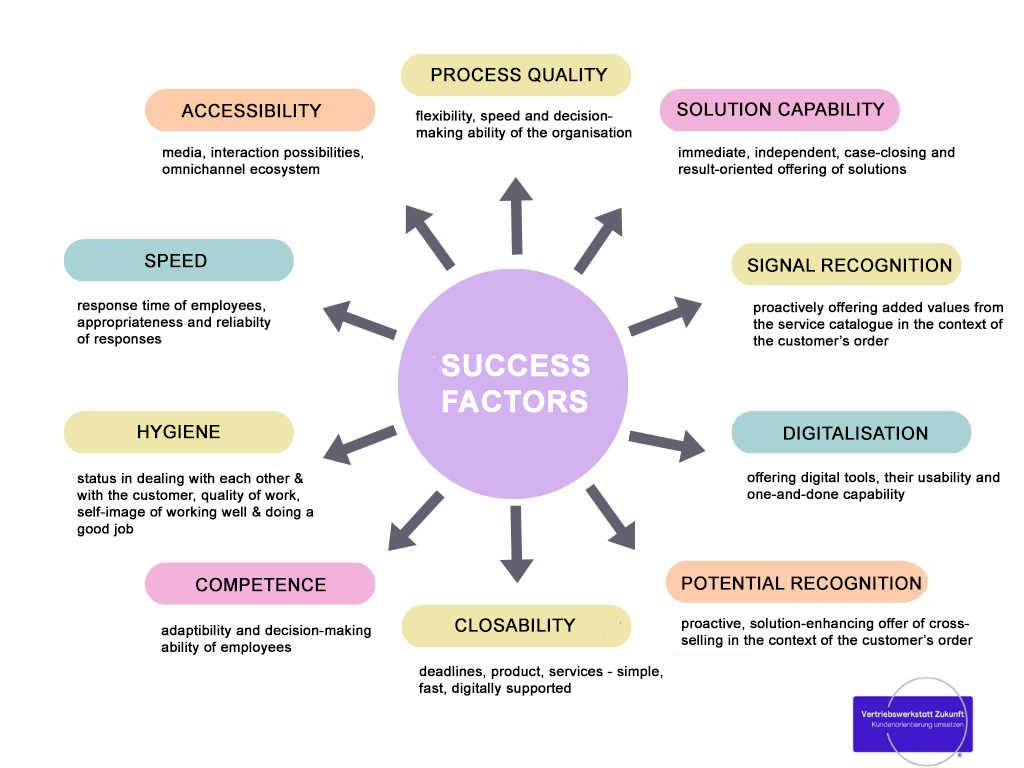10 factors for more customer satisfaction
“With us, the customers are always the focus!”
“Best local provider!”
“One of the leading IT service providers in Germany!”
You are probably familiar with such or comparable statements, which many a company uses as proof of customer orientation and customer satisfaction – often in combination with certificates, seals of approval or 5-star awards.
Customer satisfaction is considered an important factor in today’s business world. Consequently, it is obvious that companies deal with the survey of this satisfaction. Unfortunately, however, often with a superficial – possibly even wrong – motive: the promotional use of the results. In my experience, many companies are not concerned with actually recording customer satisfaction for the purpose of improvement, but merely with self-promotion. This is not only a pity, but can also be fatal! Those who lose sight of the customer experience and see the achievement of internal target figures as more important than the success of customers in using a product or service are endangering their entrepreneurial future.
Why should companies measure customer satisfaction?
I have been working in consulting for many years and have had countless conversations with employees and clients. One thing is clear to me: customers do not make their decisions on balance. We all make decisions in the present and on the basis of our truths. And every detail of perception has an impact on the relationship between company and client.
From my perspective, this must lead to a rethink on the company side. The success of the customer moves into focus. And this means that the entire customer process should be looked at differently, especially since the success of the organisation can only come from a successful customer process.
Figure 1: Metafactors for successful customer experiences
The diagram shows that customer success, i.e. the potential from the customer connection, has various aspects. Many organisations overlook important factors so that potential business with existing customers is not done in the first place. This leads to a high loss of potential, whereby the reasons – high dropout rates in digital onboarding processes, inconclusive telephone enquirers, unsuccessful contact attempts at the point of sale – are manifold.
The evaluation of customer success
On what basis is an evaluation of customer success possible at all?
The following observations help in the search for the answer to this question:
- Customer orientation in itself represents a minimum standard and is initially neutral in terms of effect.
- Undercutting the minimum standard is not oriented towards customers and increasingly leads to customer dissatisfaction.
- It is only when the minimum standard is exceeded that customer satisfaction and even customer enthusiasm can be achieved.
So we are looking for a model that can map precisely this effectiveness in the culture (action) and the instruments of an organisation that are used in customer contact at the touchpoints. I know a model that is excellent for this: the Kano Model.
The Kano Model is a very efficient tool to align the performance of an organisation with the expectations of the customers. Among other things, it defines
- Basic features,
- performance features and
- excitement features.
Figure 2: The benchmark is the standard
Subjectively, there are different views on these features. Objectively, however, it turns out that the classification of the features is strongly based on the performance of the best in the industry (often even across industries).
In my experience, therefore, the mandate for companies can only be to focus on the customer experience, to become better for the customer and thereby maximise customer satisfaction. Unsurprisingly, the truly best providers actually put customer success at the centre of their considerations and thus also ensure that the corresponding potential is raised. And for this to succeed, organisations need to know where they really stand in terms of the minimum standard of customer orientation, customer success and customer satisfaction.
What factors influence customer satisfaction?
And how can companies find factors to make their true customer orientation measurable that work towards customer satisfaction?
In my experience, ten success factors are essential:
These success factors reflect the customer’s experiences along their customer journey. In combination with the Kano Model, customer orientation can be classified into basic, performance and excitement features.
Let’s look at this with an example:
A customer has a need for a new premium coffee machine.
Accessibility:
- The customer is not thinking about Google right now and visits the homepage of his favourite supplier. There is no global search field.
- Following the standard reference “kitchen appliances” on the homepage, he learns which brands his supplier carries, but he does not learn whether his favourite is available locally.
- He searches further and finds a “contact form”.
(3 attempts, no result)
Digitalisation/completion:
- The process route “contact form” leads to the fact that a callback request can be sent, but no concrete deadline is reported back.
- The callback is made the next day by the provider’s customer service centre.
- Due to the “coffee machine” issue, the customer service centre submits a callback request to the provider’s specialist.
(3 further attempts, no result).
Completion/hygiene:
- The specialist calls back promptly and makes an appointment in his calendar, but not via the provider’s POS system/CRM. Thus, the customer request is not documented in the sales files.
- The appointment is made and the deal is closed. At the checkout, the customer is asked for his name and thus a follow-up (after sales service) can be carried out by the customer service centre.
- After the customer has unpacked at home, the question arises about the descaler.
- Because there is no reference to a service number on the receipt, the customer calls the customer service centre.
- Although the sale of the product has been personalised under the customer’s name, the customer is asked to give various data of the product, otherwise they cannot help him: the customer service centre has no access to the POS system/CRM.
The process starts all over again for the customer, at least in parts.
How do you assess this customer journey? Positive, because the deal has been closed, or rather negative with regard to the effort for all parties involved?
For me, both the customer and staff experience are cumbersome, untimely and thus below average.
- The scheduling is too time-consuming, indirect, not case-closing.
- There is no alternative offer to face-to-face counselling (video counselling).
- Due to poor process quality, follow-up cannot be carried out across staff and therefore cannot be case-closing.
- There is no added value education for the client, neither in the pre- nor in the post-processing.
Conclusion
Measuring customer satisfaction – for example, by a board member calling a customer and asking – is nice and can be used for promotional purposes, but it misses the point if the focus is not on actually improving satisfaction. For companies, it should be about improving the customer experience, creating customer success and increasing customer satisfaction. This triad ensures that customer potential can be successfully leveraged. And that is the true measure of business success.
One way to achieve this is to combine the Kano model with the ten success factors of customer orientation presented here. In my experience, the success factors form the basis for a useful understanding of the customer and pay directly into the distinctiveness of a customer relationship. If analogue, analogue-digital and digital solutions are thought out and implemented along a customer journey, customer experiences can be improved, customer success increased and customer satisfaction maximised. And this pays off in the long run for all parties involved.
Notes:
If you like the article or want to discuss it, feel free to share it in your network.
And if you are interested in aligning your sales with customer orientation and want to get a head start in B2C retail, trade, crafts, services, savings banks and banks, Ingo E. Christ will be happy to help you. If you are interested, simply send him an email at ingo.christ@vertriebswerkstattzukunft.de.

Ingo E. Christ
Ingo E. Christ is managing director and founder of Vertriebswerkstatt Zukunft®, as well as an agile coach, management consultant and trainer.
After most recently 17 professional years in various banks and positions in the cooperative financial association and previously 15 self-employed years in retail, he has developed deep expertise for customer-oriented sales through agile values and principles. With his consulting modules and workshops, he succeeds in changing perspectives to focus on customer orientation. Thanks to the identification, elevation and measurement of customer potential, he provides organisations with higher revenues, more competitive advantages and the most efficient path to digitalisation. Distinctive customer relationships are created.


